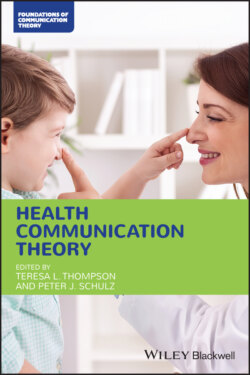Читать книгу Health Communication Theory - Группа авторов - Страница 38
Narrative Theorizing
ОглавлениеThe communication discipline boasts a rich history of narrative theory (see Bochner 2014; Fisher, 1987), and communication scholars have contributed meaningfully to the narrative turn in health contexts (see Harter et al. 2020; Harter, Japp, and Beck 2005; Sharf et al. 2011; Sharf and Vanderford 2003). At the heart of his narrative paradigm, rhetorician Walter Fisher (1984) claimed that people are homo narrans – or natural storytellers who think in stories: “Narratives enable us to understand the actions of others ‘because we all live out narratives in our lives and because we understand our own lives in terms of narratives’” (p. 8). These ideas both incorporated and extended literary theorist Kenneth Burke’s (1935/1984) arguments that narratives represent “equipment for living” – or the symbolic resources that allow individuals to size up circumstances and chart future action. According to Sharf et al. (2011), the robustness of narrative theorizing in current health communication scholarship rests in part in its focus on webs of interwoven social (and material) forces. “No story is solely personal, organizational, or public,” they explained. “Personal stories cannot escape the constraints of institutional interests, nor are they separate from cultural values, beliefs, and expectations. Meanwhile, institutional structures and scripts intertwine to form the social milieu in which performances unfold” (p. 38).
Although narrative is a broad term that encompasses a multidisciplinary collection of theories and methods, the maturation of health narrative theorizing speaks to enduring and emerging issues of concern for health communication scholars (Harter et al. 2020). To illustrate, Lynn Harter, one of the premiere narrative theorists in health communication, launched Defining Moments, a forum in Health Communication and a complementary podcast dedicated to showcasing the social and material power of storytelling. In the first 10 years, authors of the collective essays narrated “myriad maladies, infirmities, and oddities of the human condition” and storied a vast number of topics with particular import for fostering well‐being, humanizing healthcare, and advocating for change (Harter et al. 2020, p. 262).
